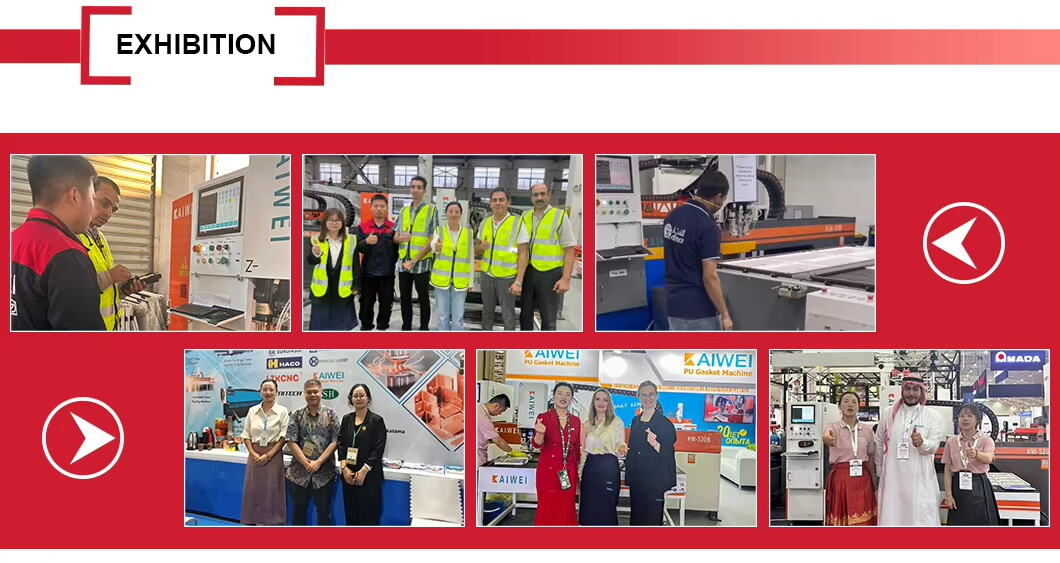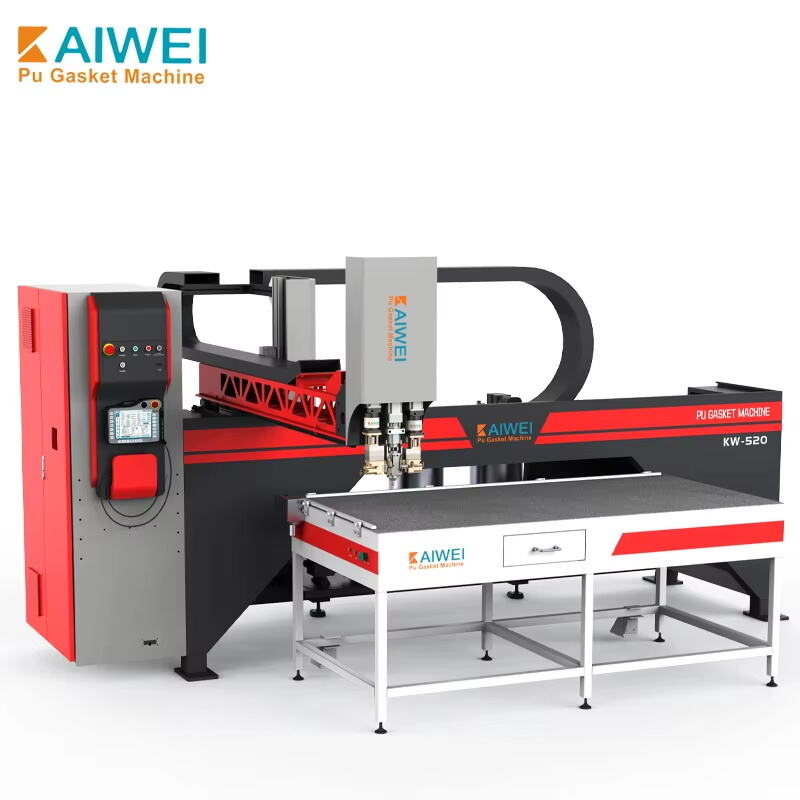Raziskovanje idealnih materialov za penilne stroje v proizvodnji
Izbira materialov, ki se uporabljajo s penični stroj je pomemben dejavnik, ki vpliva na kakovost, učinkovitost in vzdržljivost končnega izdelka. Različne industrije se zanašajo na različne penomske materiale, prilagojene določenim aplikacijam, bodisi za izolacijo, tesnjenje, dušenje ali konstrukcijsko podporo. Razumevanje, kateri materiali se najbolje uporabljajo s penilnimi stroji, pomaga proizvajalcem optimizirati procese, izboljšati zmogljivost izdelkov in zmanjšati stroške. Ta poglobljen pregled zajema najpogostejše vrste pene, ki so združljive s penilnimi stroji , njihove edinstvene lastnosti in kako izbrati ustrezne materiale za različne proizvodne potrebe.
Penne materiale, združljive s penilnimi stroji
Poliuretanska pena in njena vsestranskost
Poliuretanska pena je eden najpogosteje uporabljenih materialov v povezavi s penilnimi stroji. Ponuja izjemno prilagodljivost, vzdržljivost in izolacijske lastnosti, zaradi česar je primerna za številne uporabe, kot so tesnila za avtomobilski sektor, gradbena izolacija in embalaža.
Njena združljivost s penilnimi stroji je predvsem posledica sposobnosti hitrega širjenja in utrjevanja, kar omogoča učinkovite proizvodne cikle. Poliuretansko peno je mogoče pripraviti v različnih gostotah in stopnjah trdote, kar povečuje njeno prilagodljivost. Proizvajalcem omogoča enostavno obdelavo in visokokakovostne končne izdelke, kot so tesnila ali blazine, ki jih proizvajajo avtomatski penilni stroji.
Silikonska pena za odpornost proti visokim temperaturam in kemičnim snovem
Silikonska pena je cenjena zaradi izjemne odpornosti proti toploti, kemičnim snovem in okoljski degradaciji. Te lastnosti jo naredijo idealno izbiro za uporabe, ki zahtevajo vzdržljivost v težkih pogojih, kot so elektronika, vesoljska industrija ali motorne prostore avtomobilov.
Penače lahko natančno odmerijo silikonsko peno, kar zagotavlja enakomerno tesnjenje tudi v zapletenih geometrijah. Prilagodljivost silikonske pene pomaga tudi kompenzirati vibracije in gibanje, ne da bi ogrozila integriteto tesnjenja. Čeprav je silikonska pena običajno dražja od poliuretanske, njena dolgoročna učinkovitost upravičuje njeno uporabo v specializiranih industrijah.

Specializirani penasti materiali za edinstvene aplikacije
Epoksi peni za strukturno podporo
Epoksne pene združujejo togost epoksnih smol z lahkotnostjo pene in tako zagotavljajo strukturno trdnost pri hkrati zmanjšanem težišču. Zaradi teh lastnosti so peni na osnovi epoksidov odlična izbira za uporabo v letalski, morski in avtomobilski industriji, kjer sta ključna trajnost in prihranek na teži.
Penovalne naprave, ki se uporabljajo skupaj z epoksnimi penami, morajo zagotavljati natančno mešanje in proces utrjevanja, saj lastnosti materiala močno zaležijo od natančne sestave. Avtomatske penovalne naprave se v tem izkazujejo, saj ponujajo nadzorovano okolje za enakomerno nanašanje pene, kar zmanjša napake in poveča strukturno celovitost.
Polietilenska pena za dušenje in embalažo
Polietilenska pena je znana po svojih odličnih dušilnih lastnostih ter odpornosti proti vlagi in kemikalijam. Najpogosteje se uporablja v zaščitni embalaži, športni opremi in medicinskih aplikacijah.
Njegova združljivost s stroji za pena izhaja iz relativno preprostih procesnih zahtev in sposobnosti tvorbe struktur s sklenjenimi celicami, ki ujamejo zrak in omogočajo dušenje udarcev. Stroji za tesnenje pen pomagajo proizvajalcem pri proizvodnji enakomerne debeline in gostote, kar zagotavlja optimalno zaščito občutljivih izdelkov med prevozom in rokovanjem.
Izbira ustrezne penaste mase za določene potrebe
Zahteve glede uporabe in okoljskih pogojev
Izbira ustrezne penaste mase v veliki meri določa predvidena uporaba in okoljski pogoji. Na primer, uporabe, ki so izpostavljene ekstremnim temperaturam ali agresivnim kemikalijam, bodo imele koristi od silikonske pene, medtem ko bi za splošne izolacijske potrebe morda bolje ustrezala poliuretanska pena.
Razumevanje delovnega okolja pomaga proizvajalcem izbrati penomske materiale, ki ohranjajo učinkovitost v času, zmanjšujejo vzdrževanje in podaljšujejo življenjsko dobo izdelka. Avtomatizirane penilne naprave omogočajo hitre menjave materialov in prilagoditve za uporabo različnih tipov pene brez ogrožanja proizvodne učinkovitosti.
Stroški in razpoložljivost materialov
Čeprav je učinkovitost ključna, so stroški pomemben dejavnik pri izbiri materiala. Poliuretanska pena pogosto ponuja najboljšo ravnovesje med stroški in učinkovitostjo, kar jo naredi priljubljen izbor v mnogih industrijah. Silikonske in epoksne pene, čeprav dražje, zagotavljajo specializirane prednosti, ki upravičujejo naložbo v aplikacijah, kjer sta zelo pomembna vzdržljivost in odpornost.
Stroji za penjenje, ki so zasnovani za prilagodljivost, omogočajo proizvajalcem, da optimizirajo uporabo materialov, zmanjšajo odpadke in učinkovito nadzorujejo stroške. Dostopnost surovin vpliva tudi na izbiro; lokalni nakup sestavnih delov pen, zmanjša čas do dobave in logistične stroške.
Kako lastnosti penjenih materialov vplivajo na zmogljivost strojev za penjenje
Vpliv viskoznosti in časa utrjevanja na nastavitve stroja
Različni penjeni materiali imajo različne viskoznosti in čase utrjevanja, ki neposredno vplivajo na konfiguracijo strojev za penjenje. Materiali z visoko viskoznostjo, kot so epoksi pene, zahtevajo stroje s stalnimi črpalkami in natančnimi temperaturnimi regulatorji, da zagotovijo enakomerno uporabo.
Čas utrjevanja vpliva na hitrost proizvodnje; pene, ki se hitro utrjujejo, omogočajo večjo zmogljivost, vendar lahko zahtevajo bolj previdno rokovanje, da se izognemo napakam. Avtomatski stroji za penjenje z prilagodljivimi nastavitvami pomagajo upravljati s temi spremenljivkami in zagotavljajo gladko delovanje pri različnih tipih materialov.
Kompatibilnost s sistemi za avtomatsko doziranje in mešanje
Penovalni stroji pogosto vključujejo vgrajene sisteme za doziranje in mešanje, ki morajo biti združljivi s kemijsko naravo penastih materialov. Materiali, ki so nagnjeni k usedanju ali ločevanju, zahtevajo stalno mešanje, ki ga mora stroj zagotavljati za ohranjanje enotnosti.
Združljivost se razširi tudi na postopke čiščenja; stroji, ki uporabljajo reaktivne pene, potrebujejo specializirane protokole za čiščenje, da se prepreči nabiranje ostankov in zagotovi dolgoročna zanesljivost ter zmanjša izpadna časa.
Prednosti uporabe optimiziranih penastih materialov s penovalnimi stroji
Izboljšana kakovost in zanesljivost izdelka
Izbira penastih materialov, optimiziranih za penovalni stroj, izboljša kakovost izdelka. Enakomerna porazdelitev pene, enotna gostota in ustrezna adhezija povzročijo tesnila in blazine, ki pod operativnimi obremenitvami delujejo zanesljivo.
Ta enotnost zmanjša stopnje okvar in podaljša življenjsko dobo izdelka, kar je ključno za zaupanje potrošnikov in skladnost z regulativami.
Izboljšana proizvodna učinkovitost in zmanjšanje odpadkov
Optimizirani penini materiali, prilagojeni zmogljivostim penilnih strojev, izboljšujejo učinkovitost proizvodnje z zmanjšanjem odpadka materiala in zmanjšanjem potrebe po ponovnem delu. Natančno ravnanje z materiali in njihova uporaba zmanjšujeta stroške porabe in prispevata k okolju prijazni proizvodnji.
Penilni stroji, opremljeni z funkcijami za spremljanje v realnem času in prilagajanje, dodatno optimizirajo uporabo materialov ter ohranjajo učinkovitost skozi proizvodne cikle.
Novejši trendi v peninih materialih in penilni tehnologiji
Razvoj okolju prijaznih in na rastlinah temelječih pen
Trajnostnost gonila inovacije na področju peninih materialov, s čimer narašča zanimanje za penine na rastlinski osnovi in reciklabilne pene. Ti novi materiali imajo za cilj zmanjšati vpliv na okolje, ne da bi pri tem prišlo do izgube učinkovitosti.
Penilni stroji se razvijajo tako, da omogočajo učinkovito obdelavo teh materialov, prilagajajo se različnemu kemičnemu vedenju in potrebam obdelave ter s tem podpirajo pobude za proizvodnjo, prijazno do okolja.
Vključevanje pametnih tehnologij v penilne stroje
Prihodnje penilne strojne naprave bodo verjetno vključevali pametne tehnologije, kot so procesno upravljanje s pomočjo umetne inteligence in povezljivost prek interneta stvari. Te inovacije bodo omogočile natančnejše upravljanje z materiali, prediktivno vzdrževanje in izboljšano prilagodljivost izdelkov.
To združevanje materialoznanstva in avtomatizacije bo odprlo nove možnosti uporabe pene v različnih industrijah.
Pogosta vprašanja
Kateri so najpogostejši penilni materiali, ki se uporabljajo s penilnimi stroji?
Med najpogostejše vrste sodijo poliuretanska pena, silikonska pena, epoksijska pena in polietilenska pena, pri čemer je vsaka primerna za različne aplikacije in okolja.
Kako lastnosti materialov vplivajo na zmogljivost penilnih strojev?
Viskoznost, čas utrjevanja in kemična sestava vplivajo na nastavitve stroja, natančnost doziranja in hitrost proizvodnje.
Ali lahko penilni stroji obdelujejo več različnih penilnih materialov?
Da, mnogi penilni stroji so zasnovani z nastavljivimi parametri in zamenljivimi komponentami, da omogočajo obdelavo različnih tipov pene.
Kateri napredki oblikujejo prihodnost penastih materialov in penilnih strojev?
Razvoji na področju ekoloških pene in pametnih tehnologij strojev vodijo k bolj trajnim, učinkovitim in prilagodljivim penilnim procesom.
Vsebina
- Raziskovanje idealnih materialov za penilne stroje v proizvodnji
- Penne materiale, združljive s penilnimi stroji
- Specializirani penasti materiali za edinstvene aplikacije
- Izbira ustrezne penaste mase za določene potrebe
- Kako lastnosti penjenih materialov vplivajo na zmogljivost strojev za penjenje
- Prednosti uporabe optimiziranih penastih materialov s penovalnimi stroji
- Novejši trendi v peninih materialih in penilni tehnologiji
- Pogosta vprašanja

